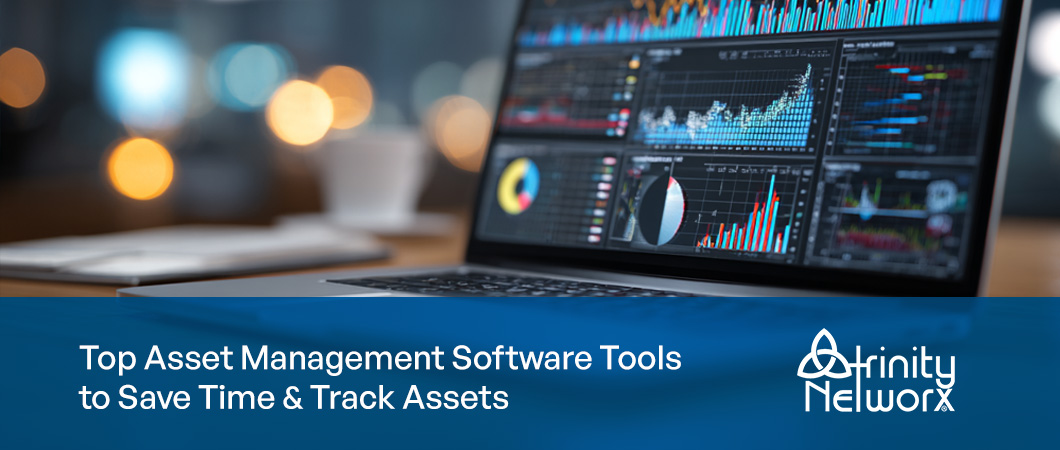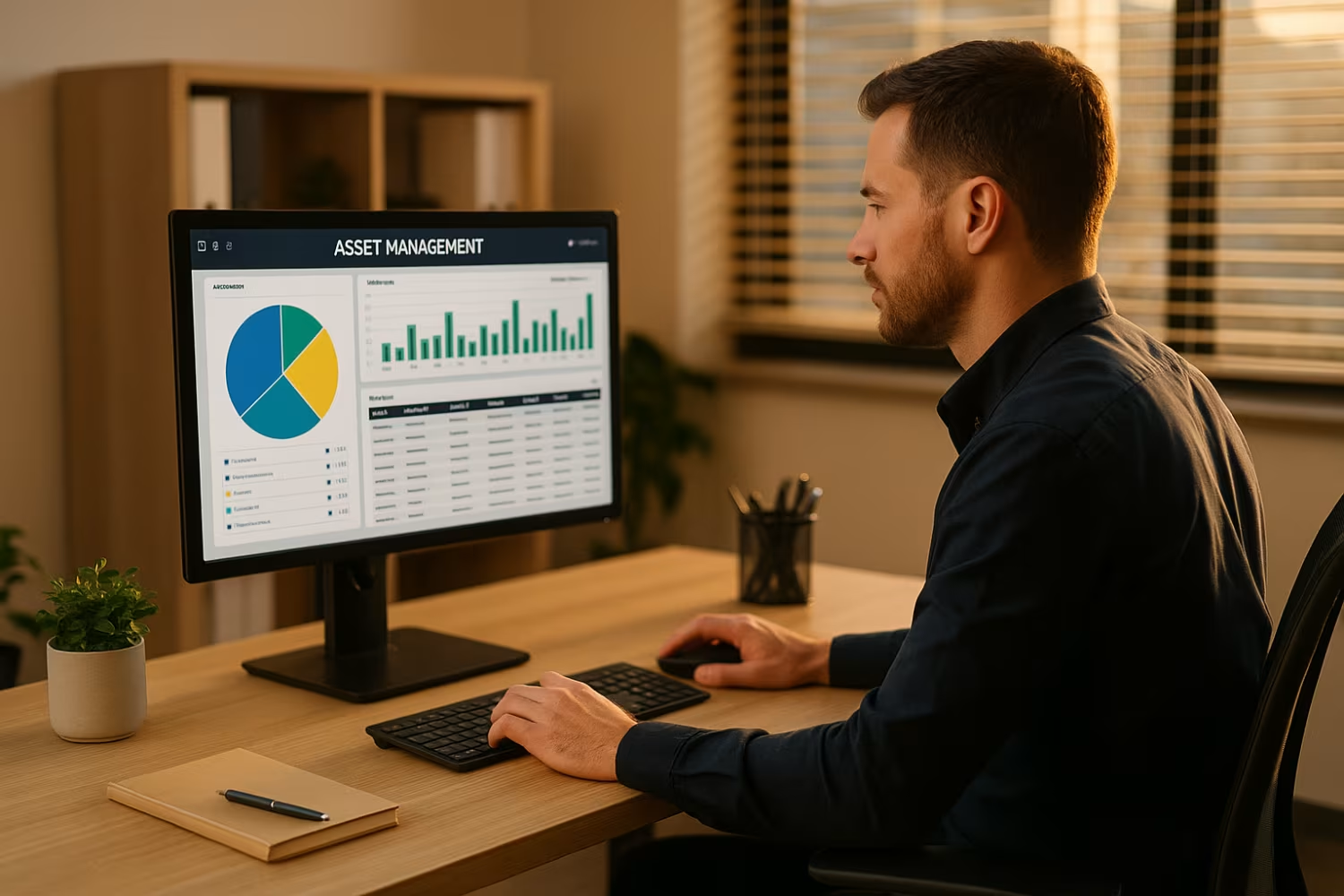3281 E. Guasti Rd, STE 700, Ontario, CA 91761
1712 9th Ave SW, Watertown, SD 57201

Managing your company’s laptops, software licenses, and warranties can quickly become overwhelming—especially if you're still using a spreadsheet. As your business grows, so does the complexity of your asset data. That’s where asset management software comes in. In this blog, we’ll explain what it is, how it works, and why it’s a better choice than manual tracking. We’ll also explore key features, common mistakes to avoid, and how to choose a system that fits your asset management needs.
Asset management software helps you track and manage physical and digital assets across your organization. It replaces outdated methods like spreadsheets with a centralized, cloud-based platform that gives you full visibility into your IT environment.
For businesses managing hundreds of devices and software licenses, this kind of system is essential. It helps you automate tasks, reduce errors, and stay compliant with internal policies and external regulations. A customizable asset management system also allows you to adapt to your specific workflows, whether you're tracking laptops, mobile devices, or cloud-based applications.

Choosing the wrong asset management solution can lead to wasted time and money. Here are the most common mistakes businesses make—and how to avoid them.
Spreadsheets are easy to start with, but they don’t scale. They lack real-time updates, audit trails, and automation. This can lead to outdated or incorrect asset data.
If your team works remotely or across multiple locations, having a mobile app is critical. It allows employees to update asset status on the go, improving accuracy and efficiency.
Some software offers flexible subscription pricing, while others require large upfront costs. Make sure the pricing model aligns with your budget and growth plans.
Your asset management software should integrate with your service desk. This ensures that support tickets are linked to the correct assets, saving time and reducing confusion.
Look for management tools that grow with your business. If the system can’t handle more users or assets over time, you’ll be forced to switch later.
Before choosing a solution, outline what you need to track and manage. This helps you avoid paying for features you don’t use—or missing ones you need.
Without full visibility into your assets, you risk compliance issues and overspending. Make sure the software provides real-time dashboards and reporting.

Asset Panda is one of many asset management solutions available today. It offers a user-friendly interface and mobile access, which makes it a strong choice for small to mid-sized businesses. However, it’s important to compare features across multiple platforms.
Some tools focus on IT asset management, while others support broader asset types like facilities or vehicles. Look for a solution that fits your industry and asset types. Also, consider whether the software is cloud-based, how customizable it is, and whether it supports your existing workflows.
Choosing the right software means knowing what features matter most. Here are the top ones to consider.
If you're managing IT hardware and software, ITAM software features are essential. These include license tracking, device inventory, and lifecycle management.
A good system logs every change made to an asset—from purchase to retirement. This helps with audits and troubleshooting.
Mobile access is key. Make sure the software works on both iOS and Android so your team can update data from anywhere.
You should be able to track and manage assets in real time. This includes status updates, location changes, and user assignments.
Look for customizable reports and dashboards that give you insights into asset usage, costs, and performance.
Not everyone needs access to all data. Role-based permissions help protect sensitive information.
If you use other business tools, API support is a must. It allows your asset management software to connect with systems like HR, finance, or ticketing platforms.

Rolling out asset management software takes planning. Start by identifying all assets you want to track. This includes laptops, servers, software, and even cloud-based tools. Next, clean up your existing data to avoid importing outdated or duplicate records.
Train your team on how to use the system. Make sure they understand how to update asset status, assign devices, and report issues. Finally, set up regular audits to keep your data accurate over time.
Managing asset data well ensures your system stays useful long-term. Here are some tips.
Following these steps helps you maintain a reliable asset management system.

Are you a business with 20 or more employees looking for a better way to manage your IT assets? If you're growing and finding it harder to keep track of devices, software, and warranties, you're not alone.
At Trinity Networx, we help businesses like yours choose and implement asset management software that fits your needs. Our team will guide you through setup, training, and ongoing support so you can focus on running your business.
Spreadsheets are manual and prone to errors. Asset management software automates tracking, updates in real time, and stores asset data securely. It also supports features like barcode scanning and warranty tracking, which spreadsheets can’t handle efficiently.
With a cloud-based system, you can manage assets from anywhere and ensure your team always has the latest information. This reduces mistakes and saves time.
Asset Panda is known for its mobile app and ease of use. It’s a solid choice for small to mid-sized teams. However, it may not offer the advanced features some larger businesses need.
If you need deeper integrations or more customizable workflows, other management solutions might be a better fit. Always compare based on your specific asset management needs.
Look for features like ITAM support, service desk integration, and real-time updates. These help you track and manage assets efficiently.
Also, check if the system supports customizable fields and automated alerts. This makes it easier to manage software licenses, warranties, and hardware like laptops.
Management tools automate repetitive tasks like updating asset status or generating reports. This reduces manual work and improves accuracy.
They also help you find information faster. Instead of digging through a spreadsheet, you can search by asset type, user, or location in seconds.
Most ITAM software is offered as a subscription. This gives you access to updates, support, and cloud-based features.
Subscriptions also make budgeting easier. You pay a predictable monthly or yearly fee instead of a large upfront cost.
Yes, many platforms offer iOS apps. This allows your team to update asset records from their phones or tablets.
Using a mobile app helps keep your asset data current, especially when managing assets across multiple locations or remote teams.